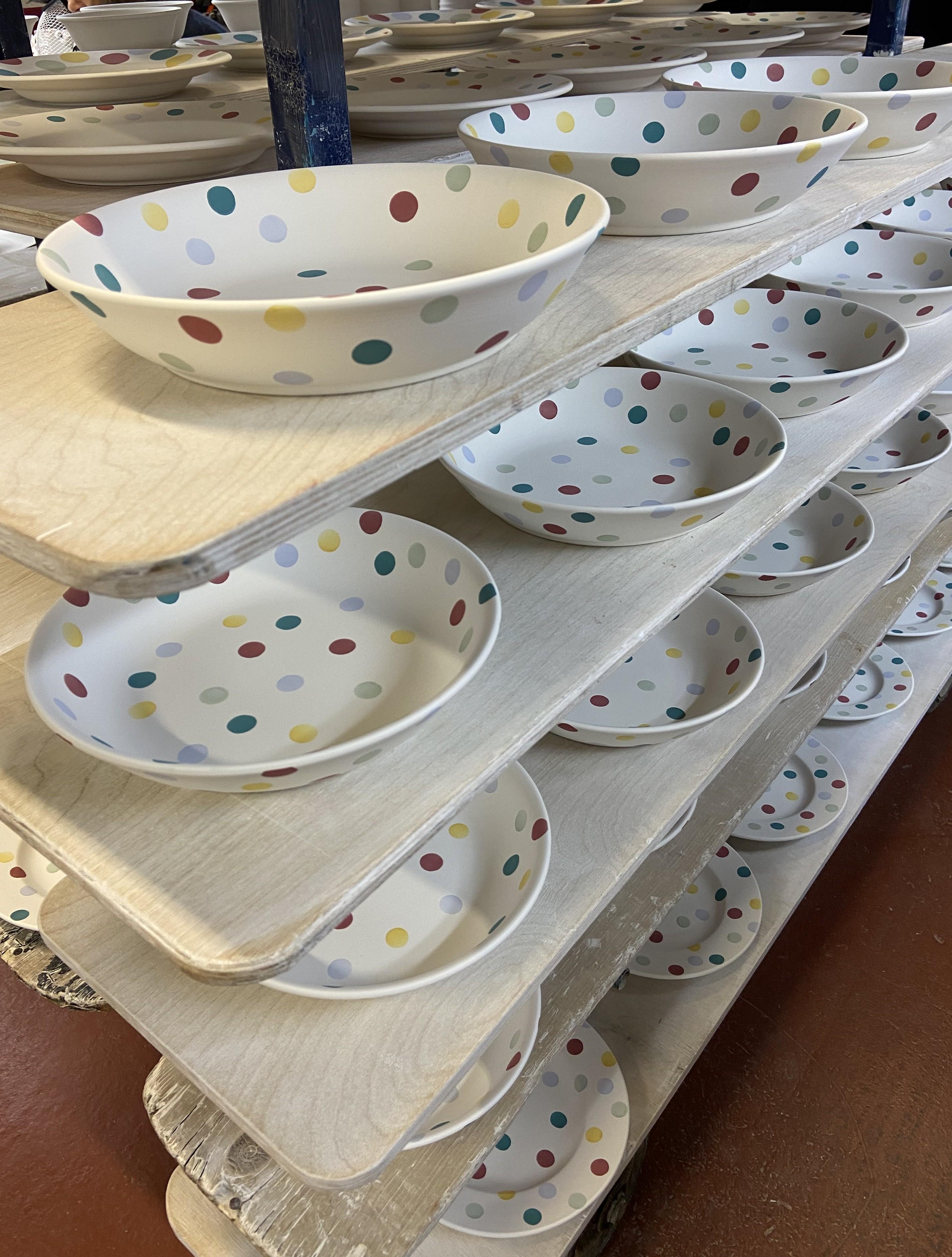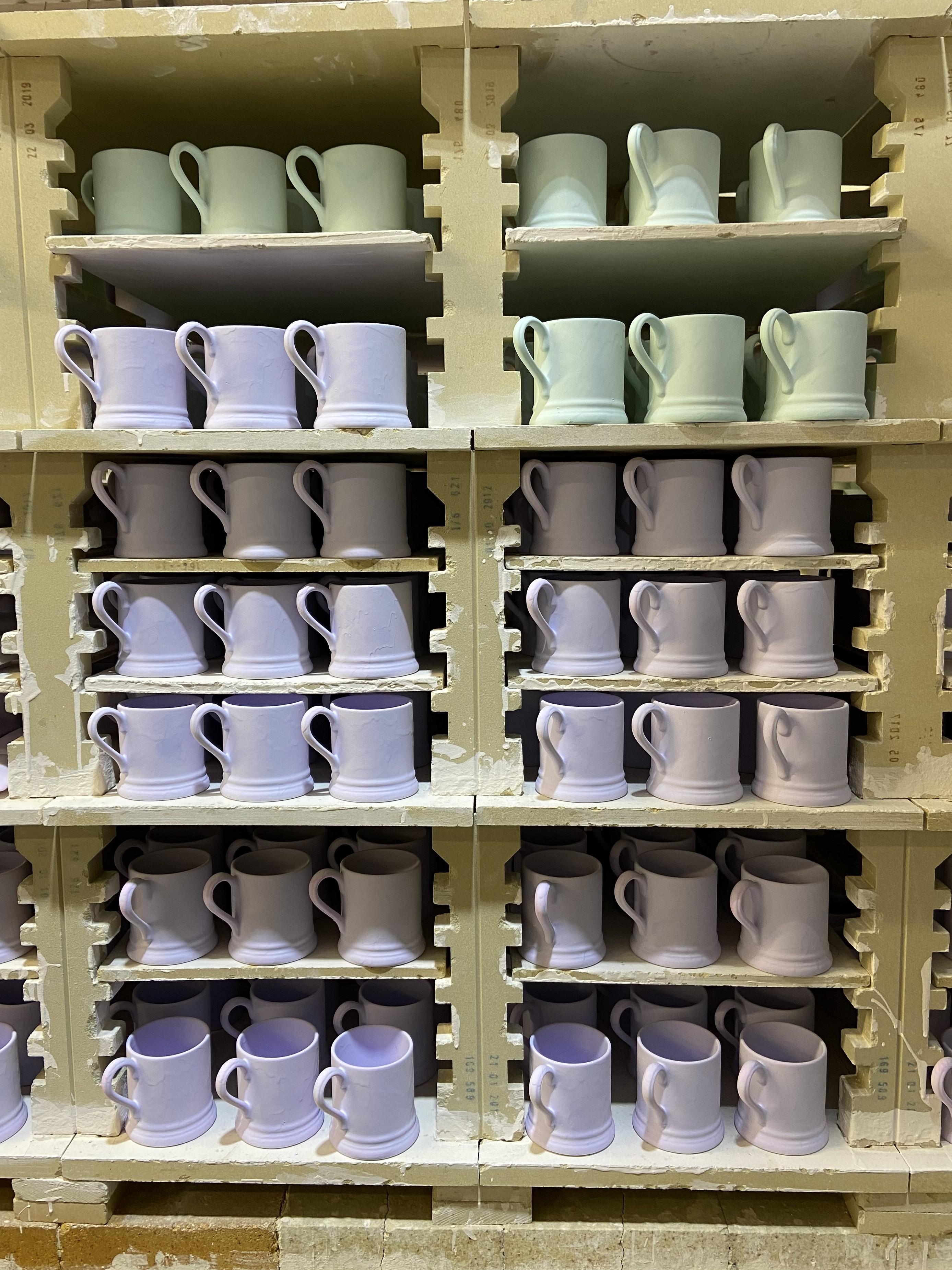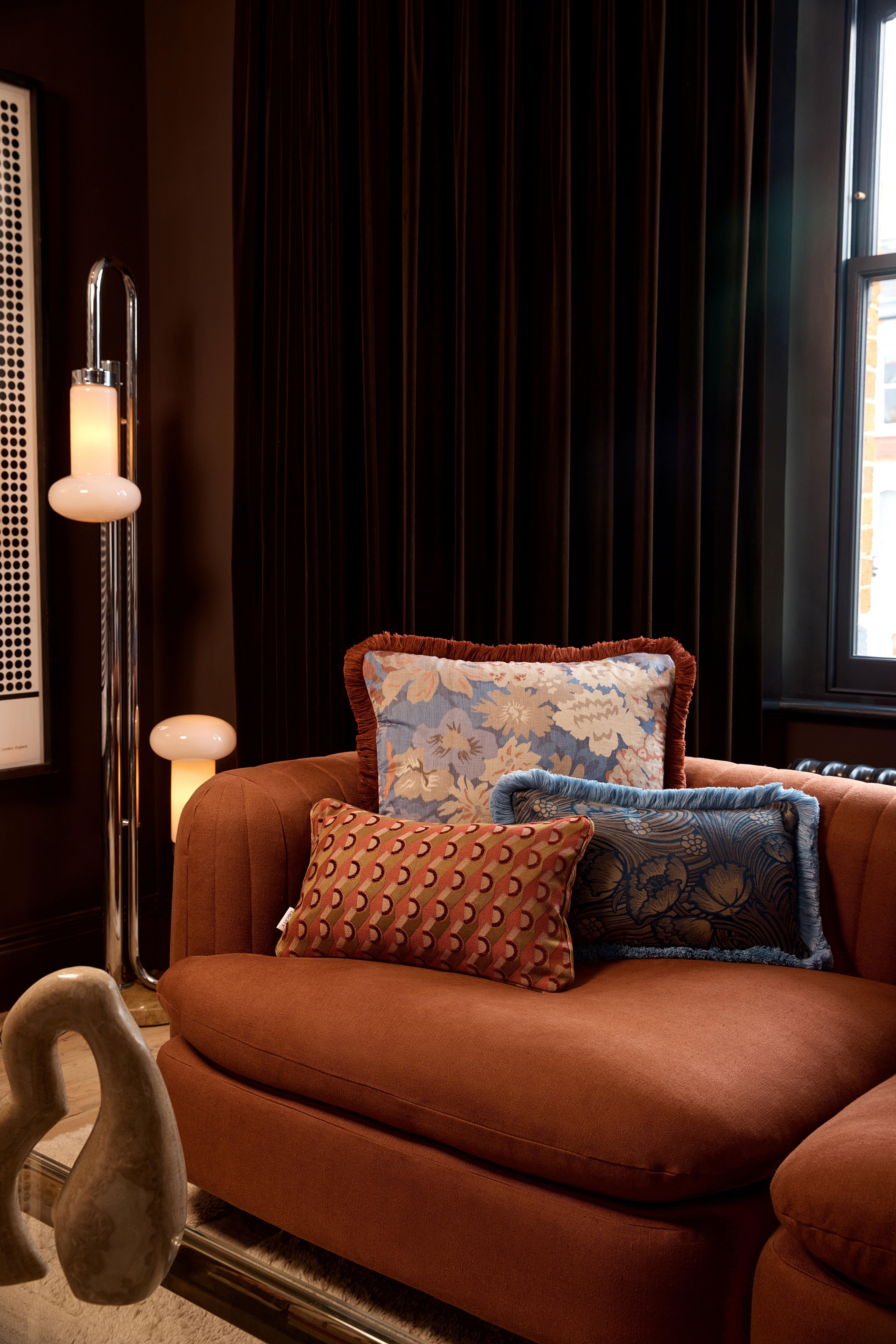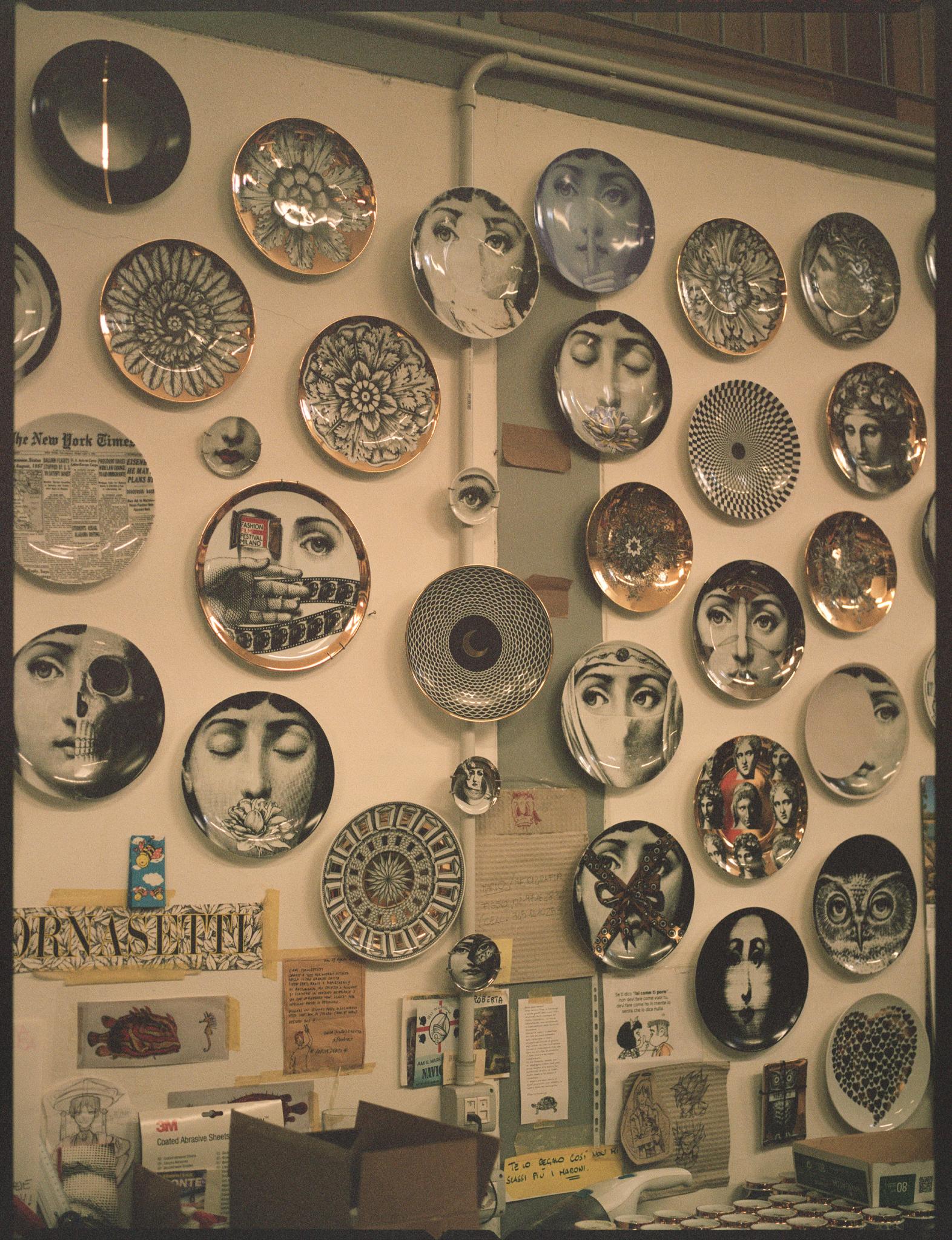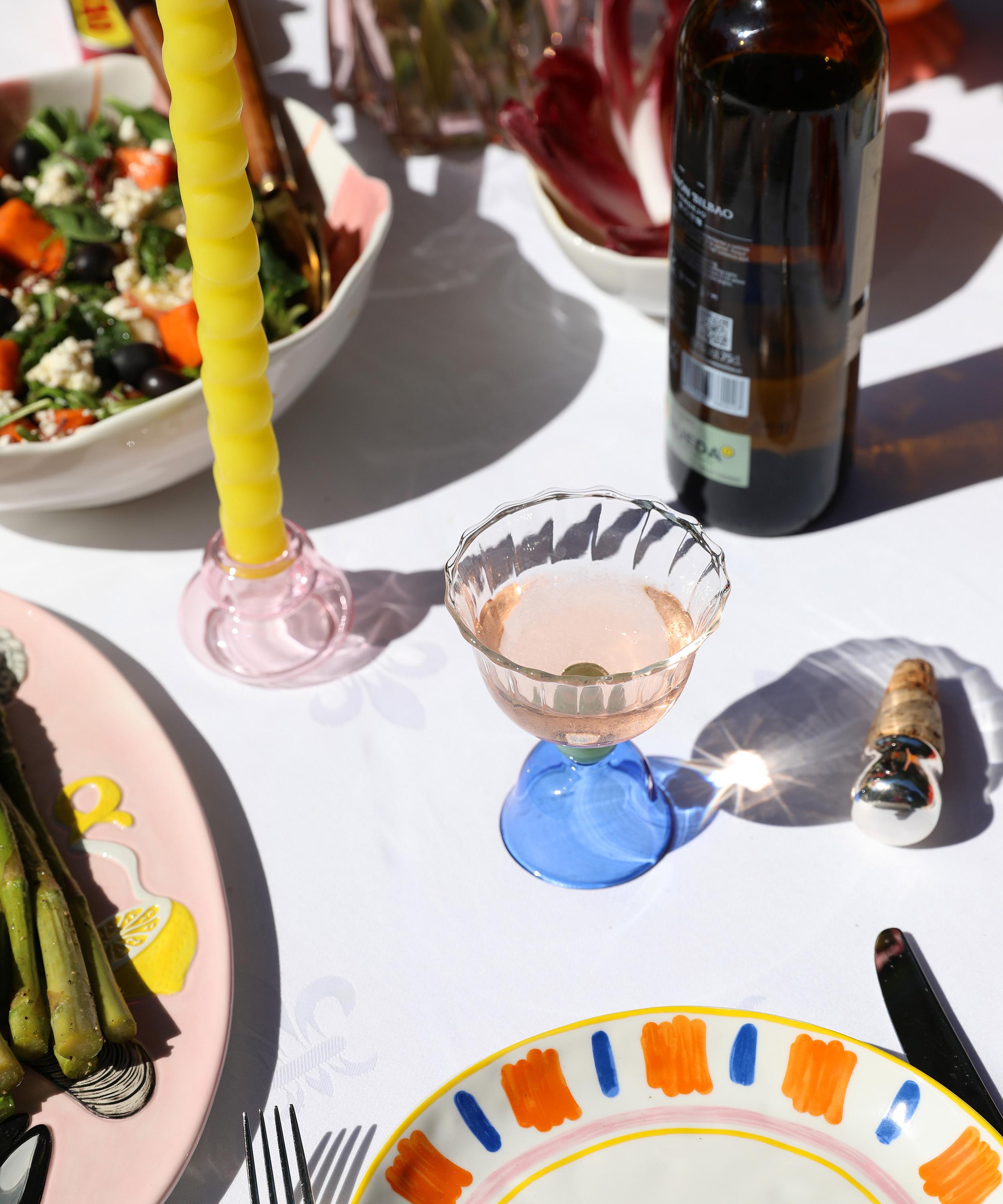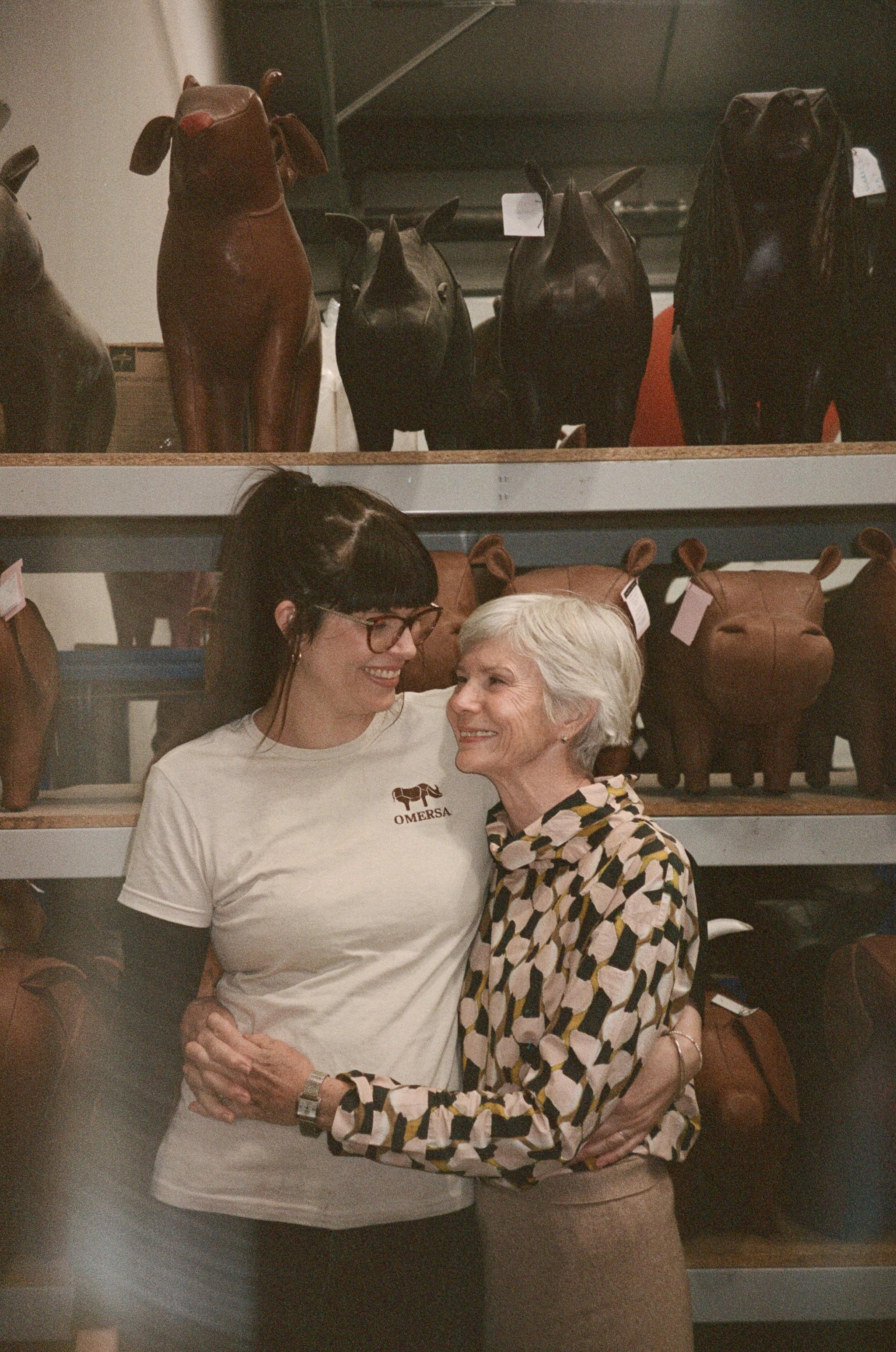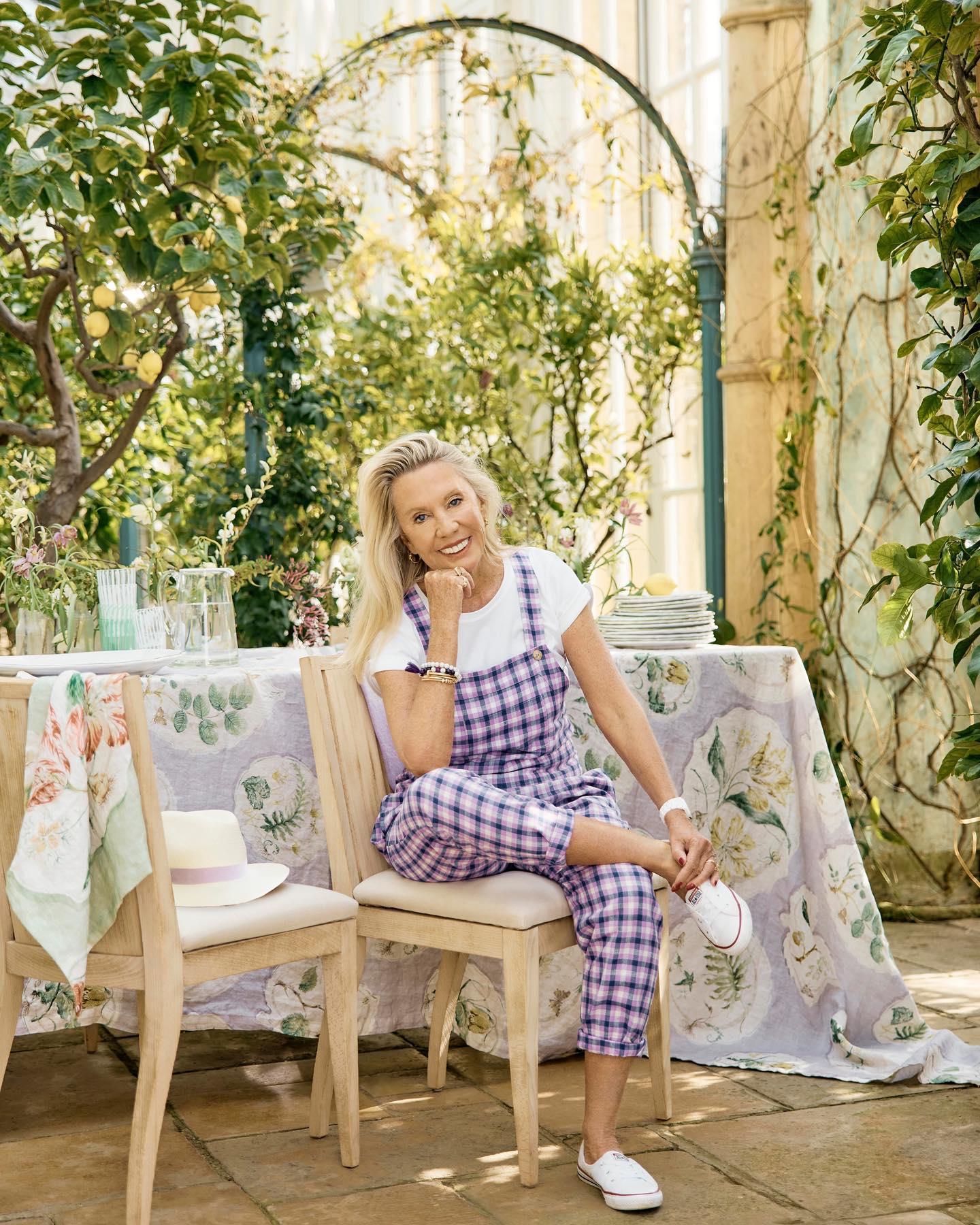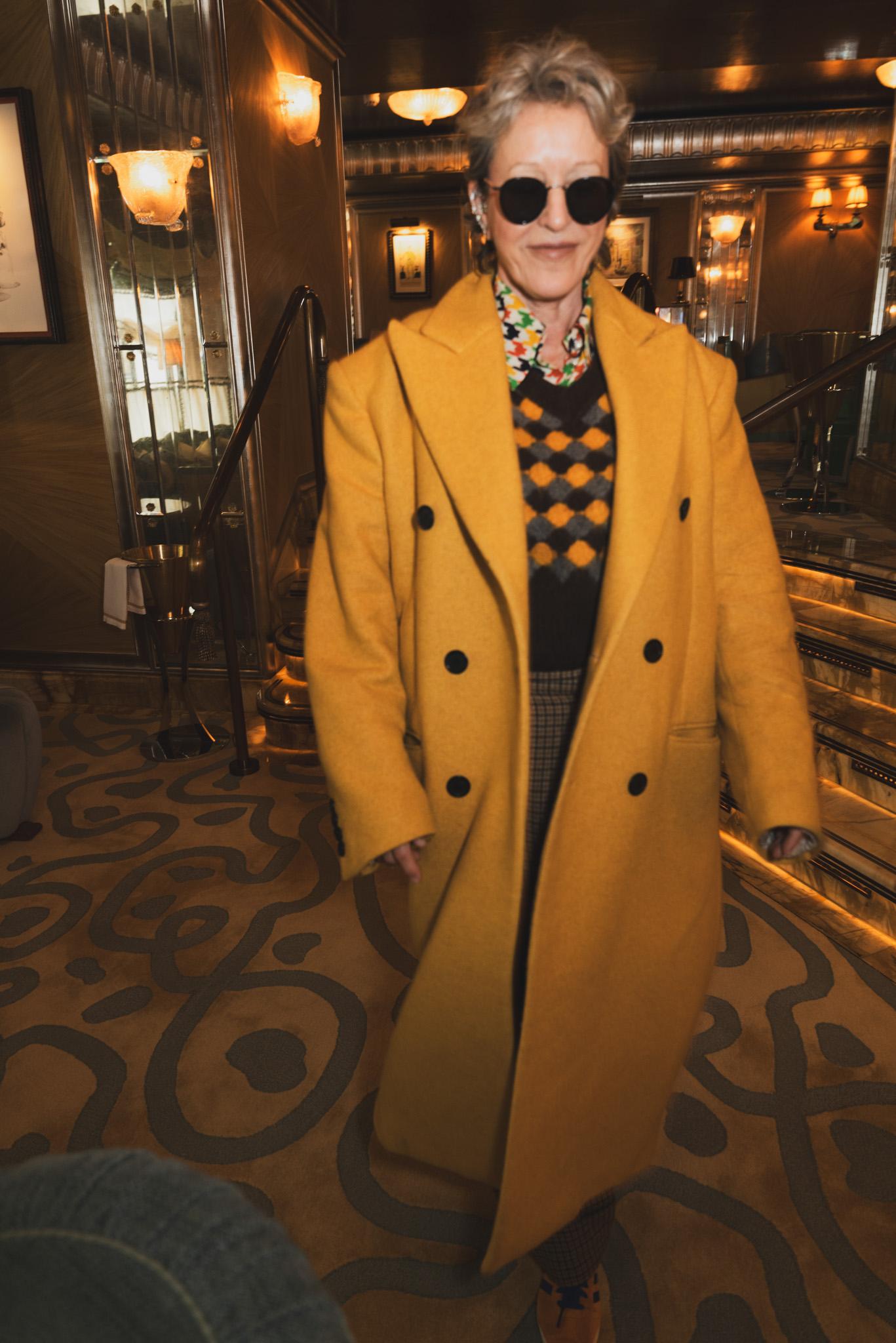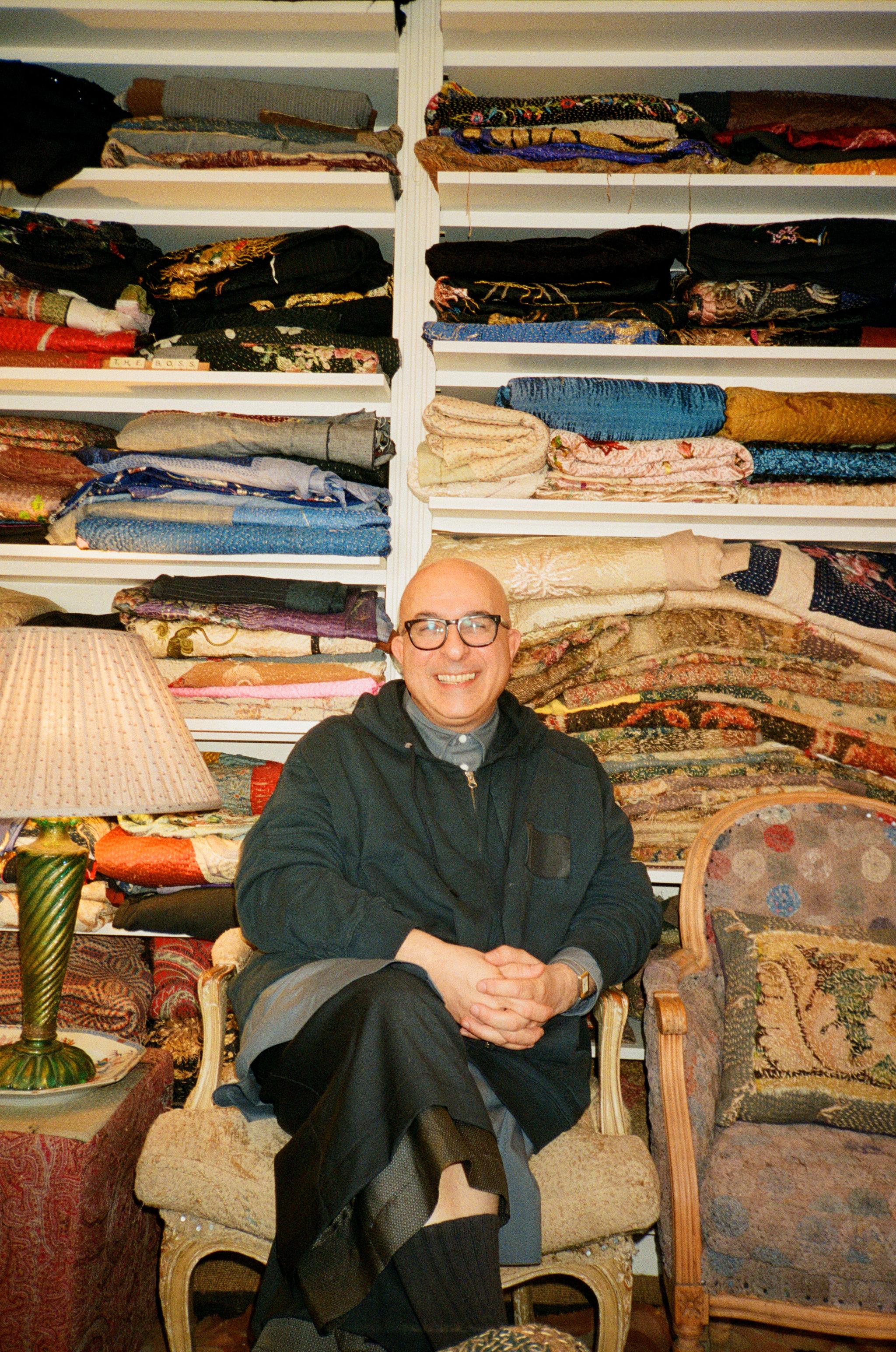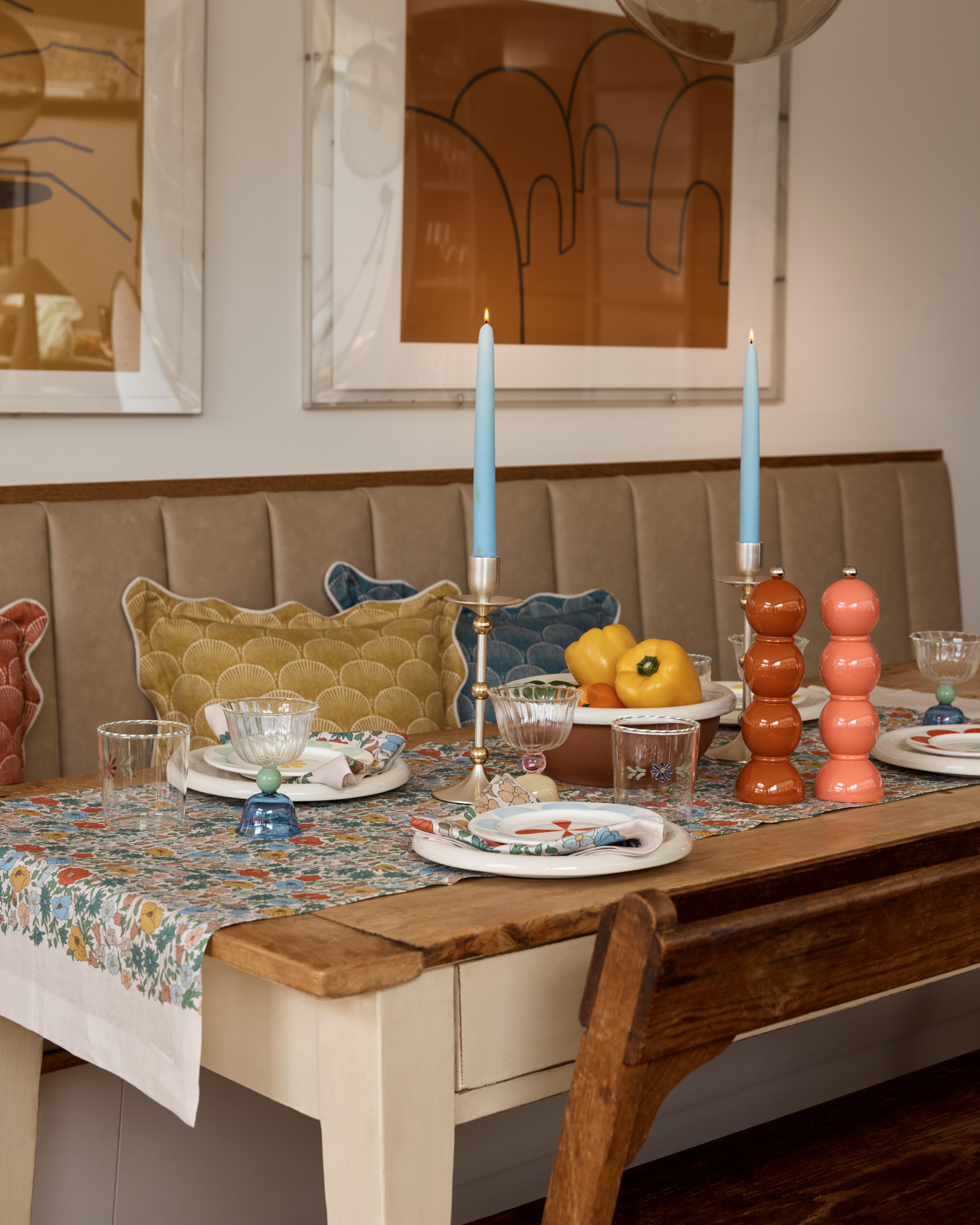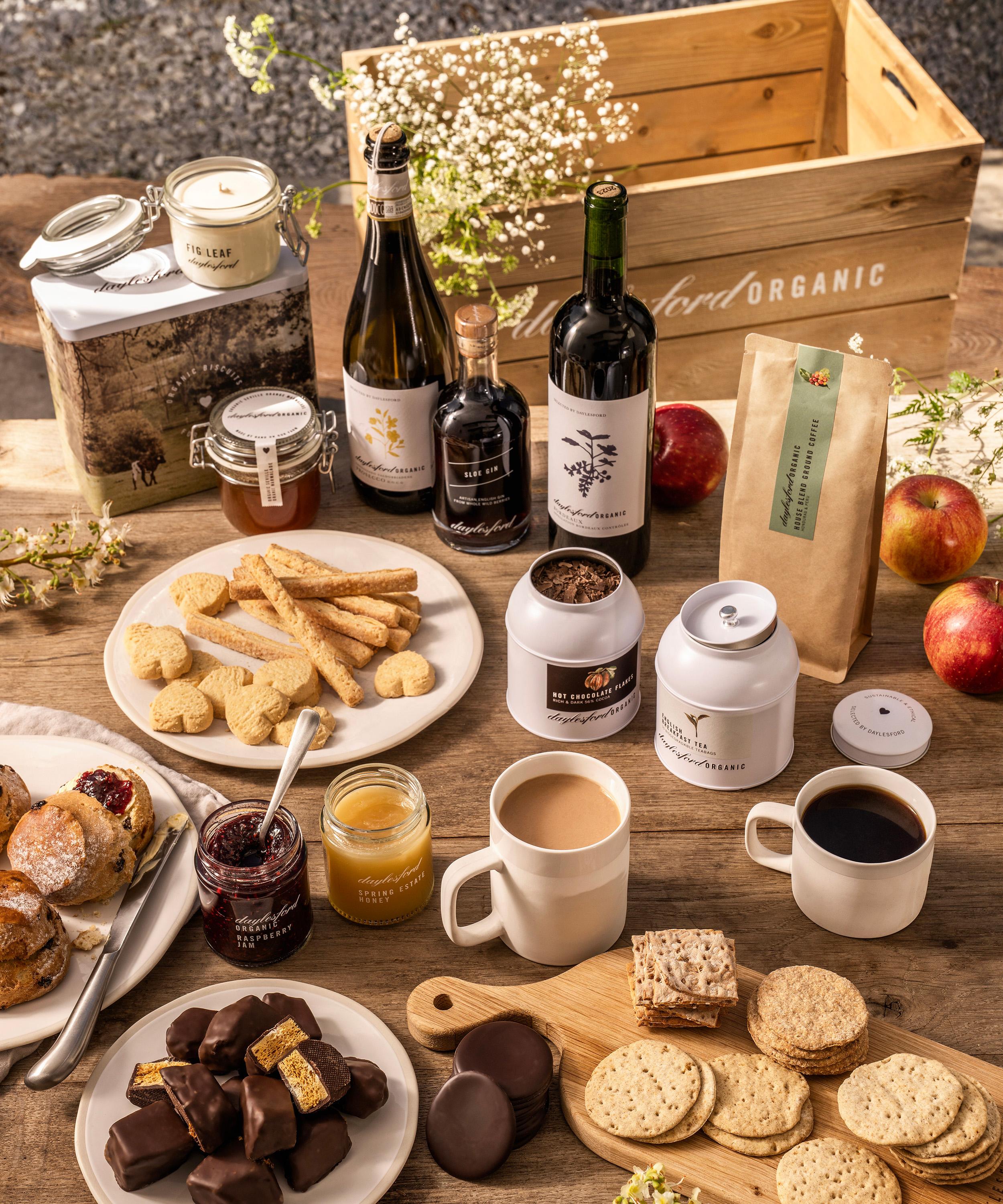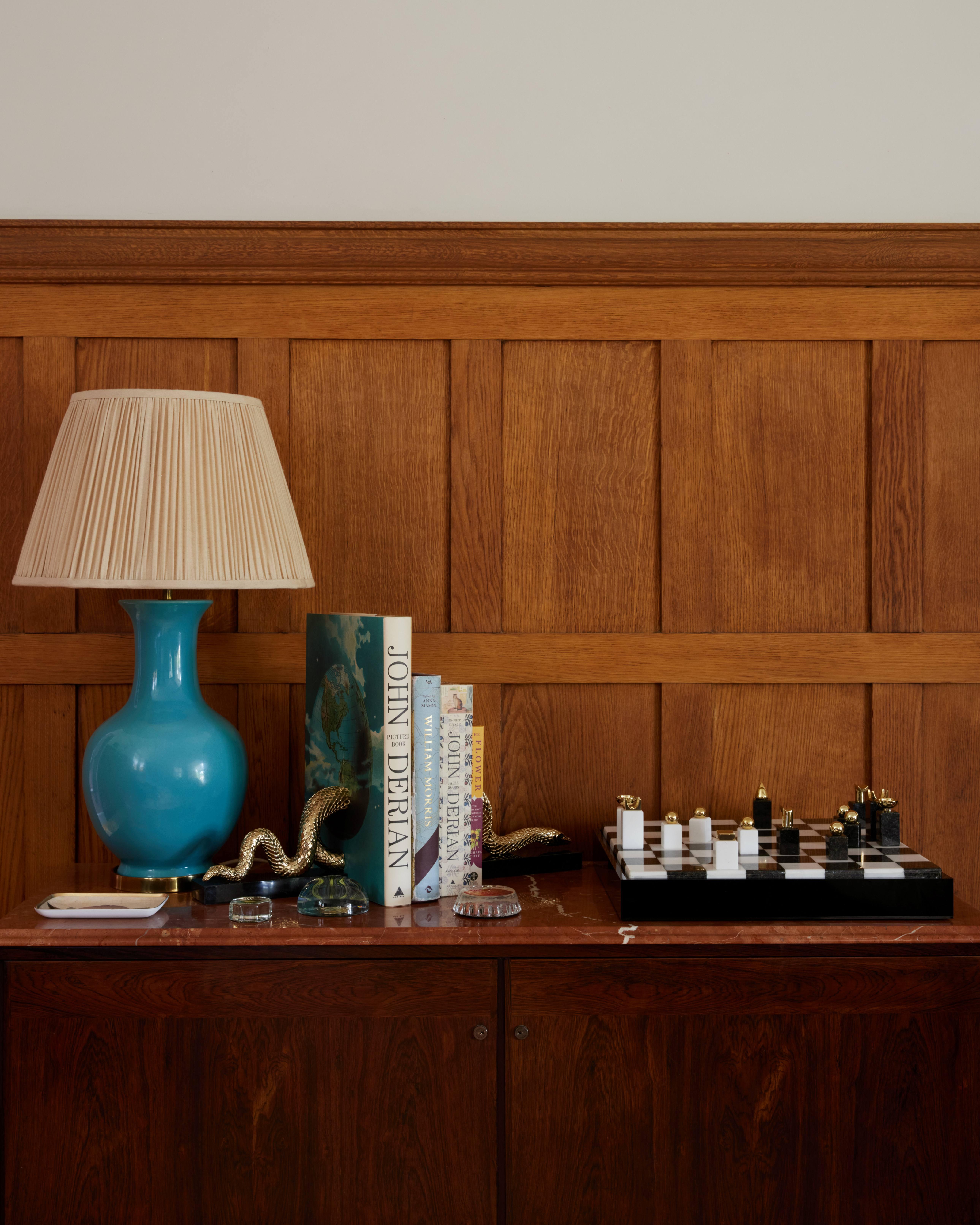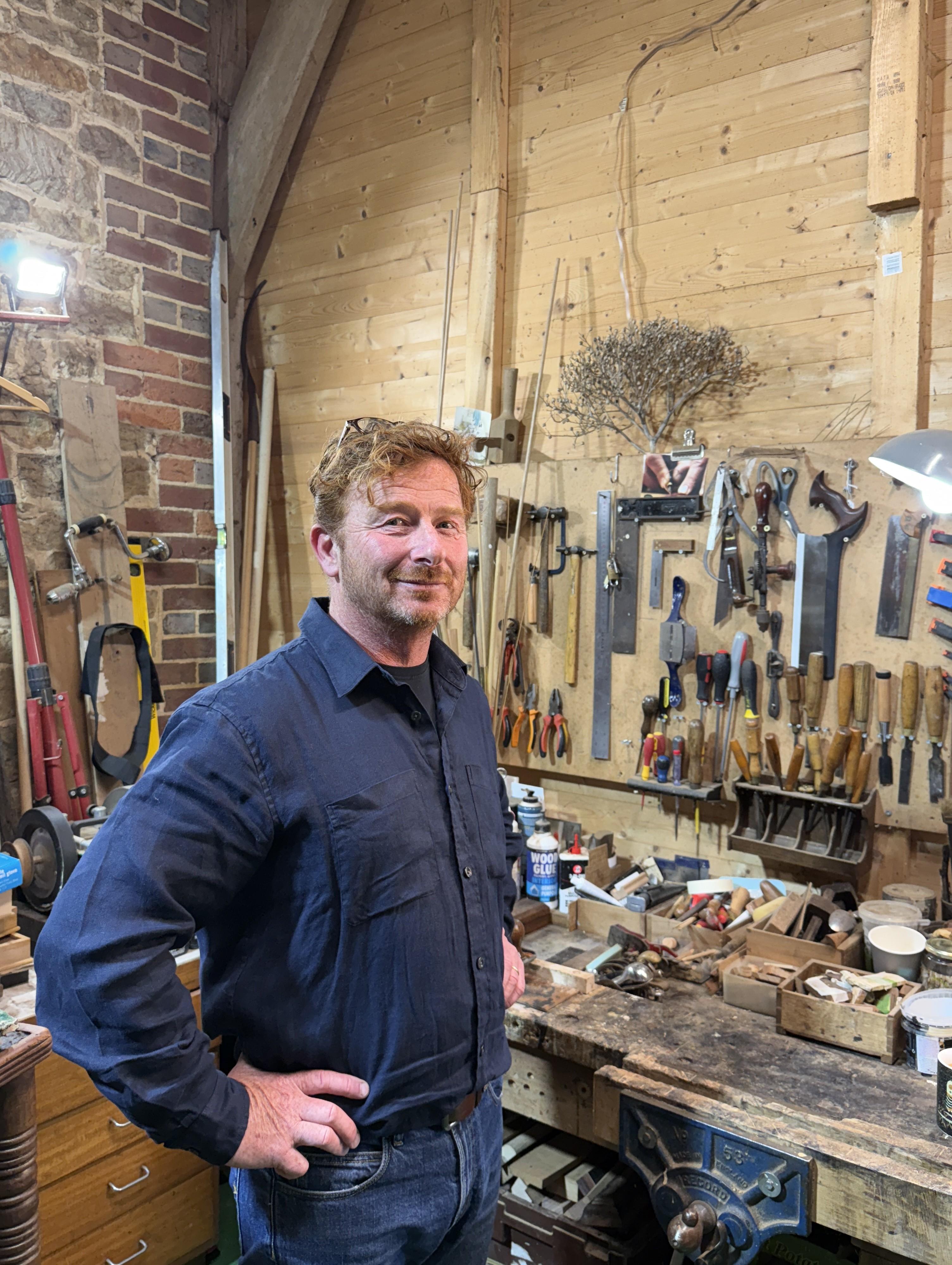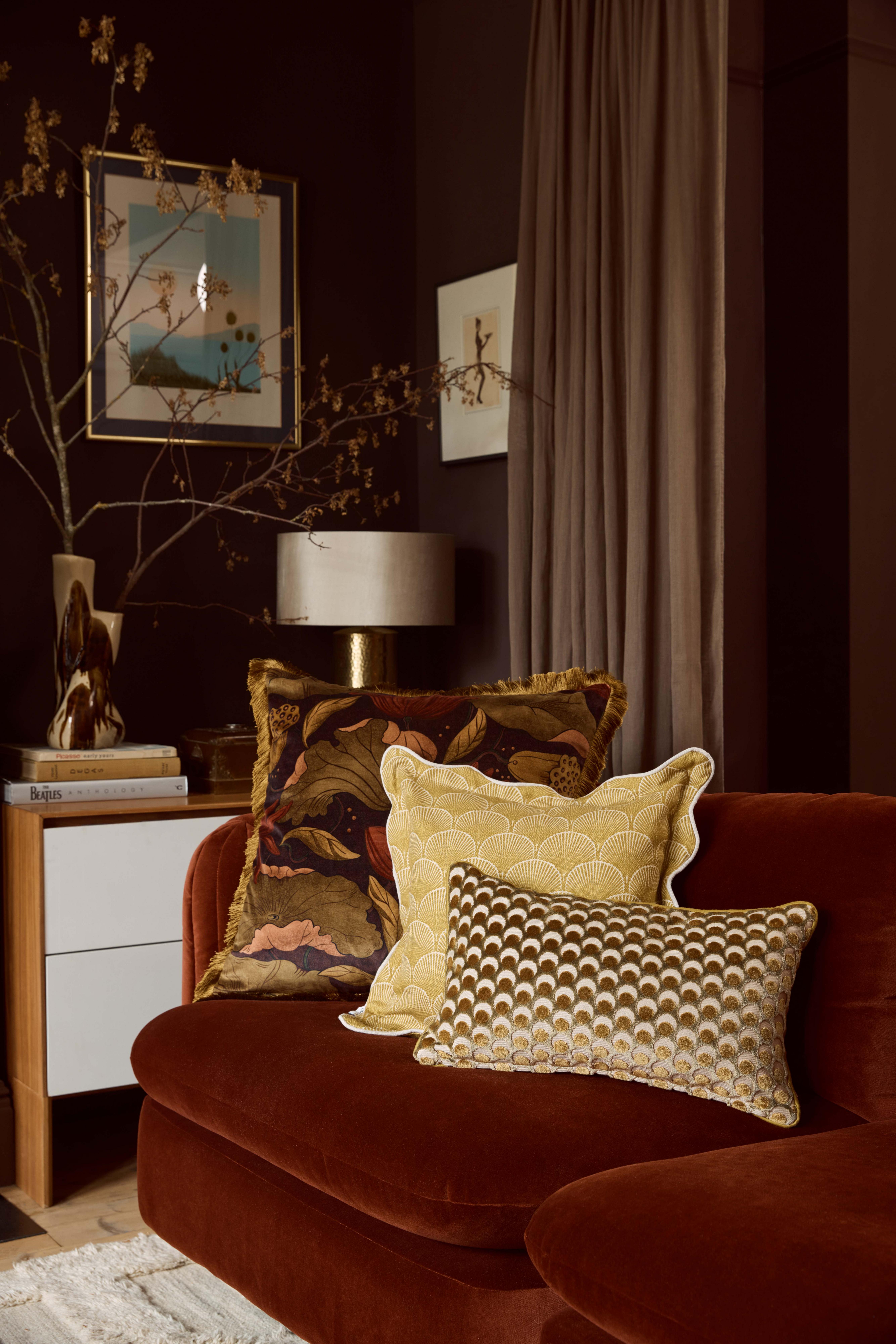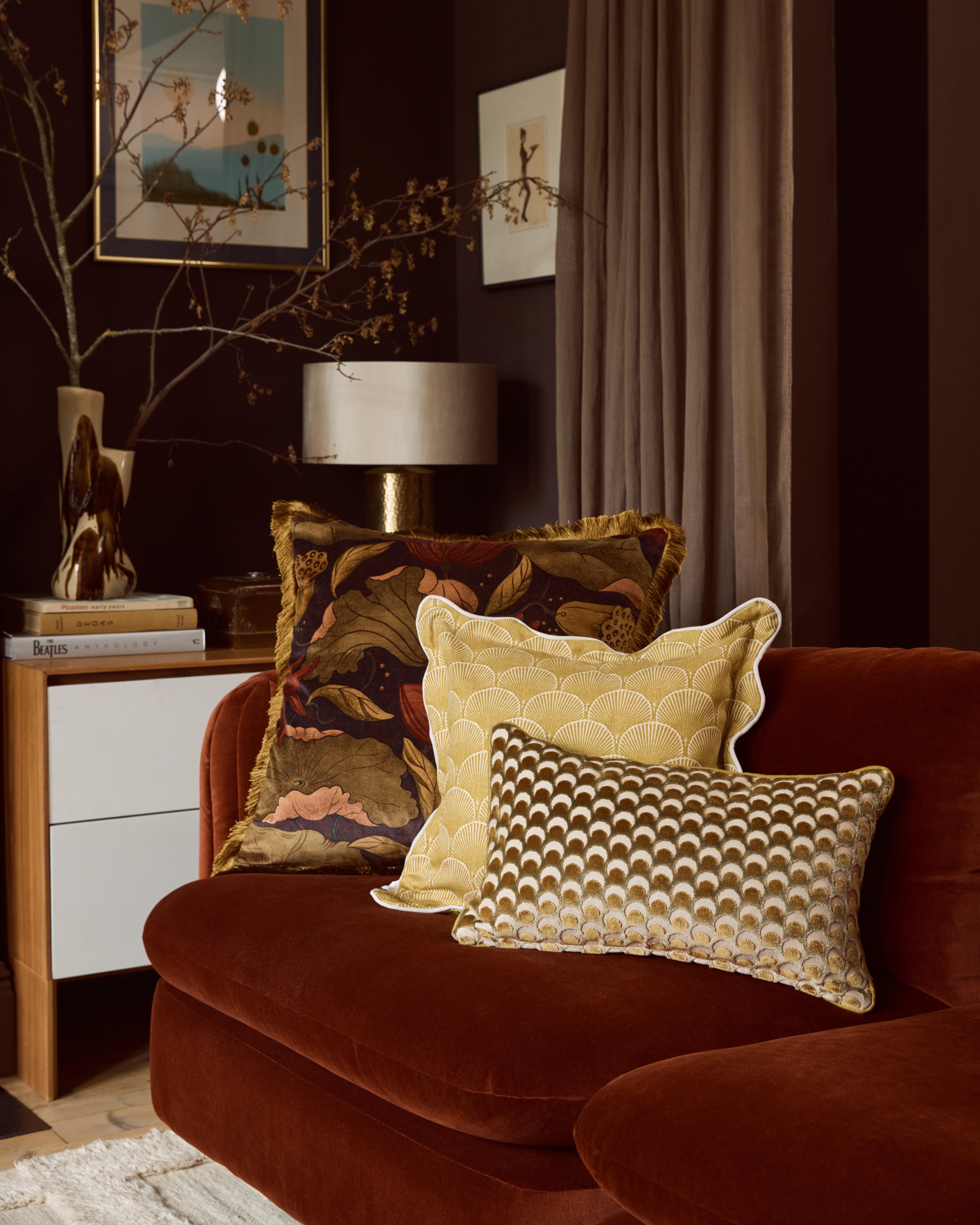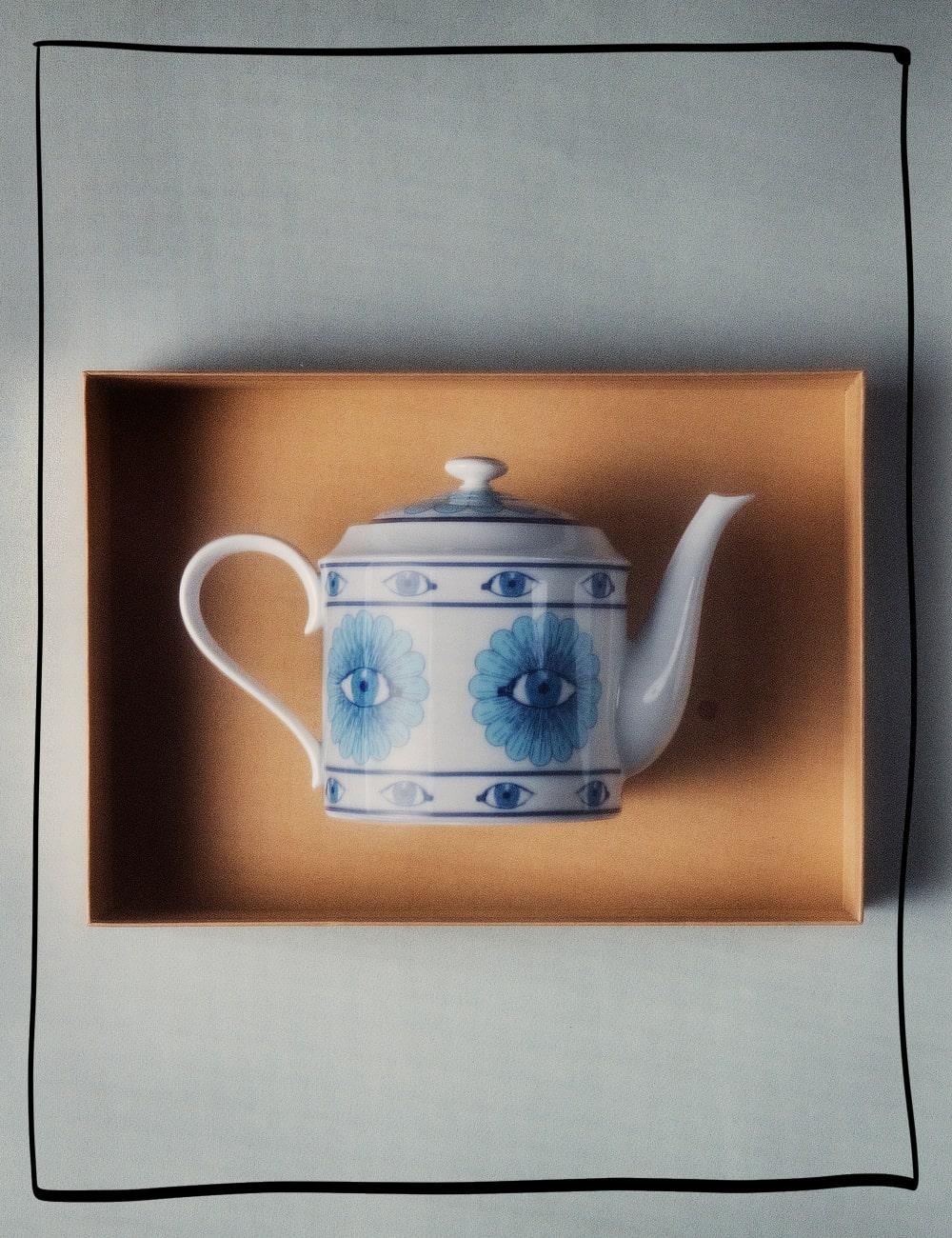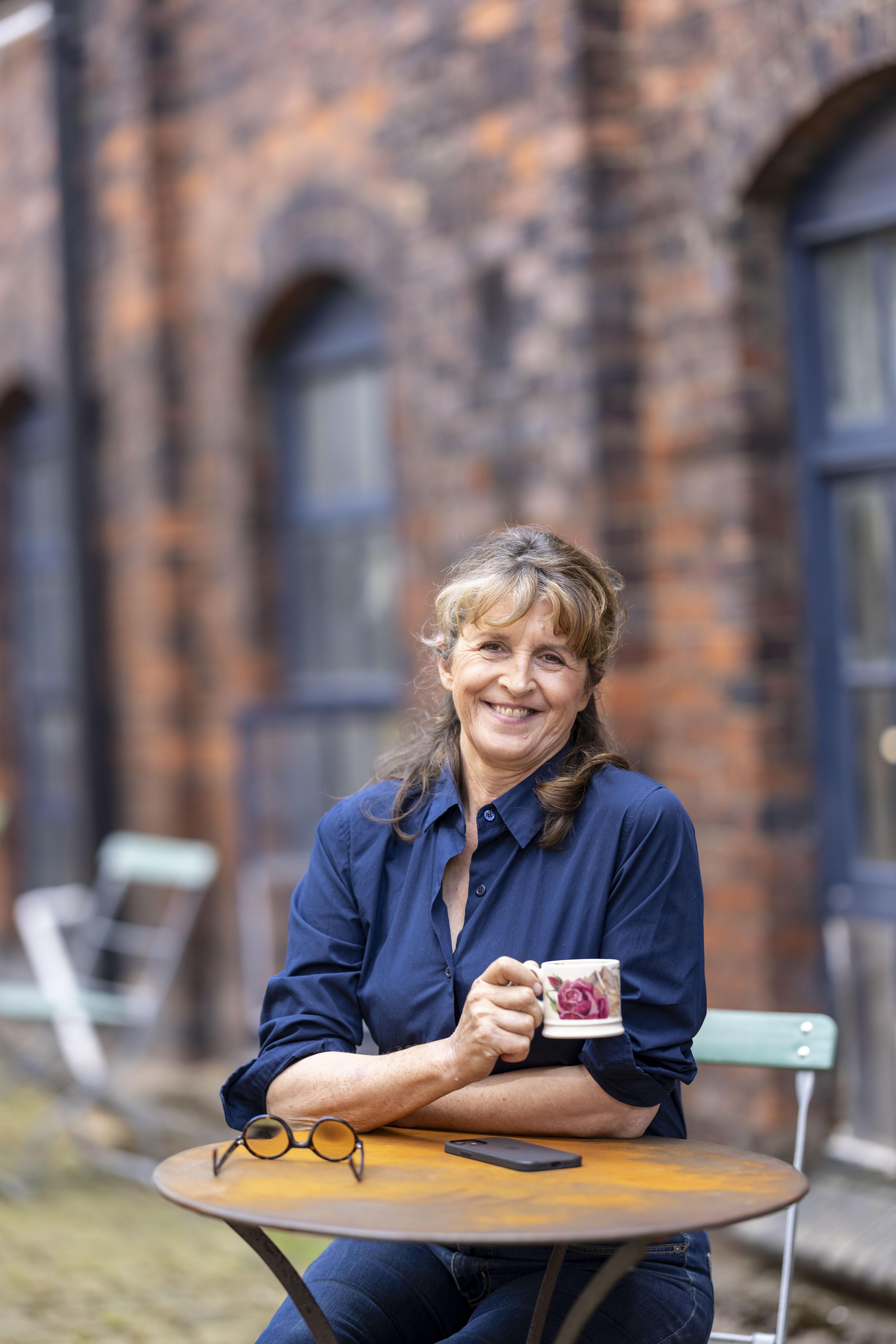
In the Studio with Emma Bridgewater
Her ceramic creations adorn kitchens up-and-down the country, and ahead of the brand’s 40th birthday: Liberty takes a tour of Emma’s world
Read more
In the Studio with Emma Bridgewater
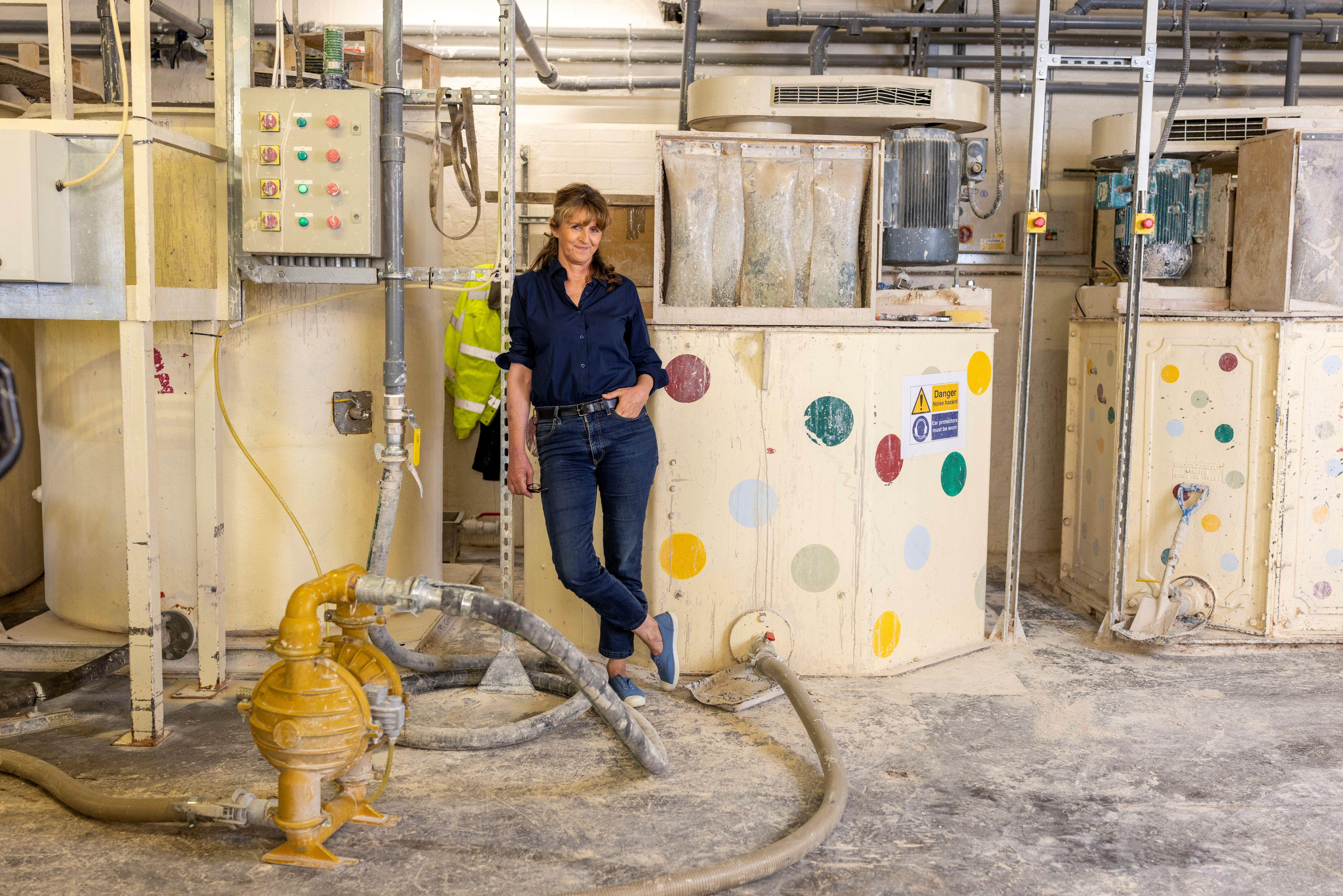
Her ceramic creations adorn kitchens up-and-down the country, and ahead of the brand’s 40th birthday: Liberty takes a tour of Emma’s world
Emma in her factory in Stoke-on-Trent
Look in the crockery cupboard of any home in the country and, more-than-likely, you may spy a colourful, polkadot mug, plate, bowl or teapot looking back at you.
These spots are the signature of Emma Bridgewater, the Stoke-on-Trent based ceramics brand that has become a much-loved staple in decerning home lovers’ collections. Founded almost 40 years ago, Emma herself remains at the heart of the company to this day and radiates enthusiasm for her business, team and products when Liberty meets her shortly before Christmas.
Based in one of Stoke-on-Trent's historic Potteries, as a brand, Emma Bridgewater’s charm lies in its distinctly British sensibility: an eclectic style, relaxed polish and designs that tap into a quotidian sense of British wit.
This feeling exudes from the walls of the factory: where each and every Emma Bridgewater product is handmade and hand decorated. There’s a convivial warmth to the conversations happening between concentration, bunting flutters from the high ceilings, tea and cake are served liberally in the café (in Emma Bridgewater crockery, naturally) and framed portraits of the royal family are dotted across the walls.
While the moulding, shaping, glazing and kiln firing of each item is fascinating, sponge-work and decoration are what truly stand out in Emma Bridgewater’s creations. From vegetables to love hearts: many of the brand’s most iconic designs are created using these sponges. At the factory, a team of sponge cutters intricately carve out designs destined for use by the decoration team, who meticulously apply the sponges by hand, with some designs finished with personalisation or hand-painting.
Within a year of celebrations, Emma Bridgewater joined Liberty to tell the story of her brand and its journey over the past four decades.
Can you introduce yourself and tell us about your brand?
I started a pottery company known as Emma Bridgewater nearly 40 years ago. We hand-make and, specifically, hand-decorate a lot of these patterns, which are printed by hand in our big Victorian factory in Stoke-on-Trent, known as the Potteries. Emma Bridgewater is about celebrating the best of the Staffordshire tradition—its skills and goodwill. We are incredibly happy beneficiaries of this heritage. When I arrived there in 1984, the Potteries were closing down. Today, we employ about 350 people, creating various patterns that honour those traditions.
How did you first become interested in ceramics?
For those who knew me in my early 20s, it came as a surprise when I started making pottery in Stoke-on-Trent. I didn’t go to art school, wasn’t really a potter, and didn’t study business—I read English literature at university. But I had a longing for a project, and one day in a china shop, it hit me like a hallucination. The market and the industry weren’t aligned. I thought about my mum, her birthday, and her warm, lovely kitchen. There was nothing relevant to that vision, and I thought, “I could make that”.
A friend who was a graphic designer back in the 80s gave me a name and number and told me to call "Sam in Stoke". Though I hesitated, he pushed me, saying, “Get ready, go on, just do it. It’s a great idea, and come back and tell me about it”.
When I got to Stoke, I was appalled by the deindustrialisation happening at a fast pace. Yet, I found someone named Sam working steadily in a small pottery, and we got along well. He developed my shapes and taught me as I made things up as I went along. Stoke was key for me—while the job losses were distressing, I found something lovely. Now, 40 years later, I run a big Victorian factory with many people. Creating those jobs is the greatest privilege of my life.

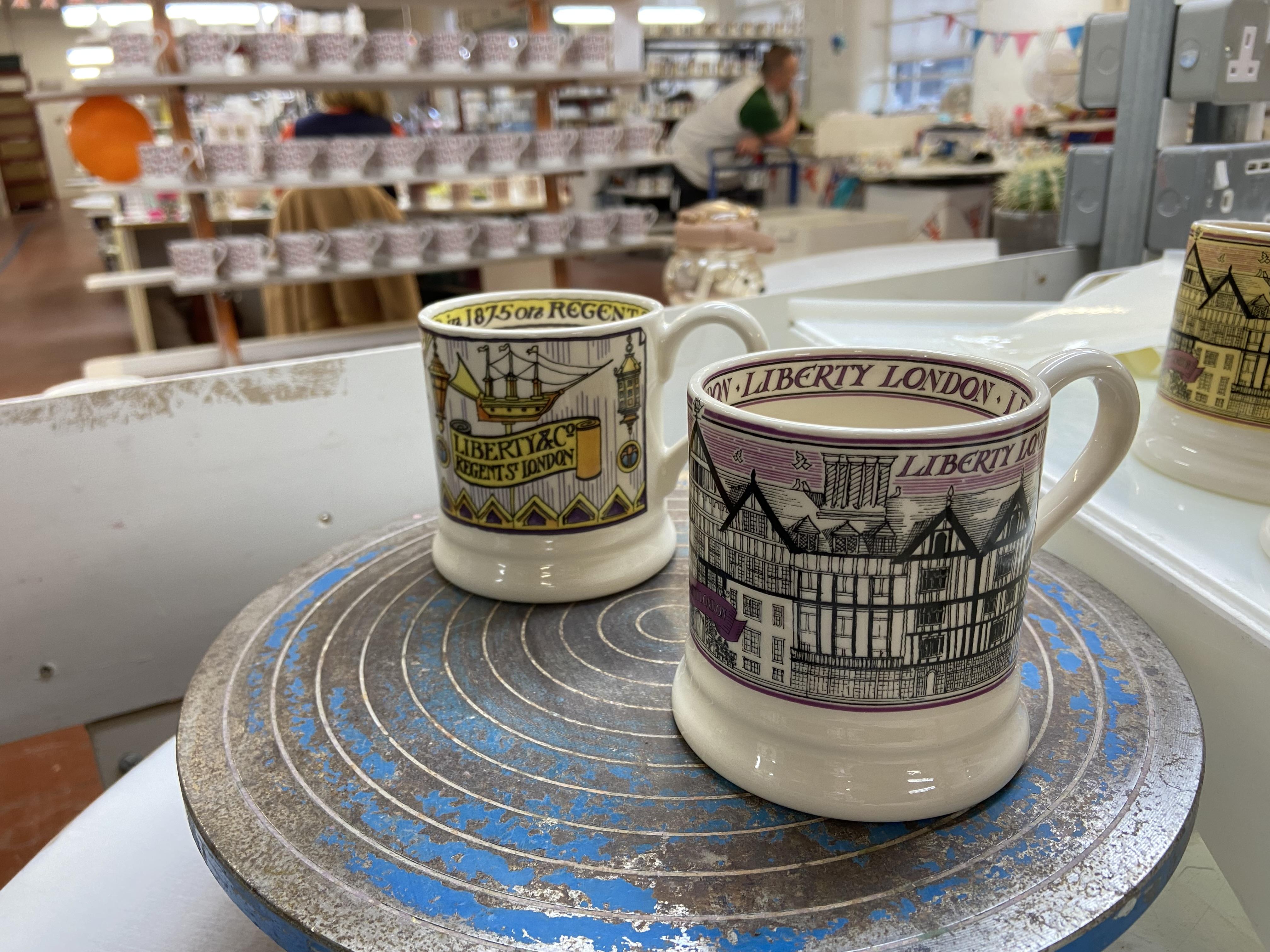
How has your design style evolved over the years?
I didn’t go to art school, so my approach to design is steeped in literature and other inspirations. I often think about designing with words, spending time finding old posters and objects beyond just pottery. My kitchen is a riot of different styles. I see our pieces as ingredients for people to use, rather than following a strict aesthetic.
A few years in, I married a talented designer, Matthew Rice, who continues to design for us. For example, he created the lovely vegetable patterns like tomatoes and blackberries. My focus is on spongeware. Together, we’ve created a blend of styles over the years.
Can you talk us through some of the processes used in creating your pottery?
Our superpower is spongeware, a technique using cut sponges to create patterns. These patterns are assembled by hand and signed by the decorator. Visitors to the factory are often surprised to learn how truly handmade our pieces are. Every polka dot, for instance, is individually applied, giving each piece a unique warmth and character. It’s like finding the perfect pair of jeans—our customers fall in love with the pieces because they feel personal and special.
How do you maintain consistency in your designs?
We have a consistent colour palette, with only a few additions over the years. This ensures a natural harmony between old and new designs, making them feel cohesive. My ex-husband, Matthew, continues to contribute calligraphy and illustration, adding depth to the collection. For example, the Toast range combines his writing with my inspiration from historical suffragette china. We love playing with words on pottery, which has become a signature of the brand.
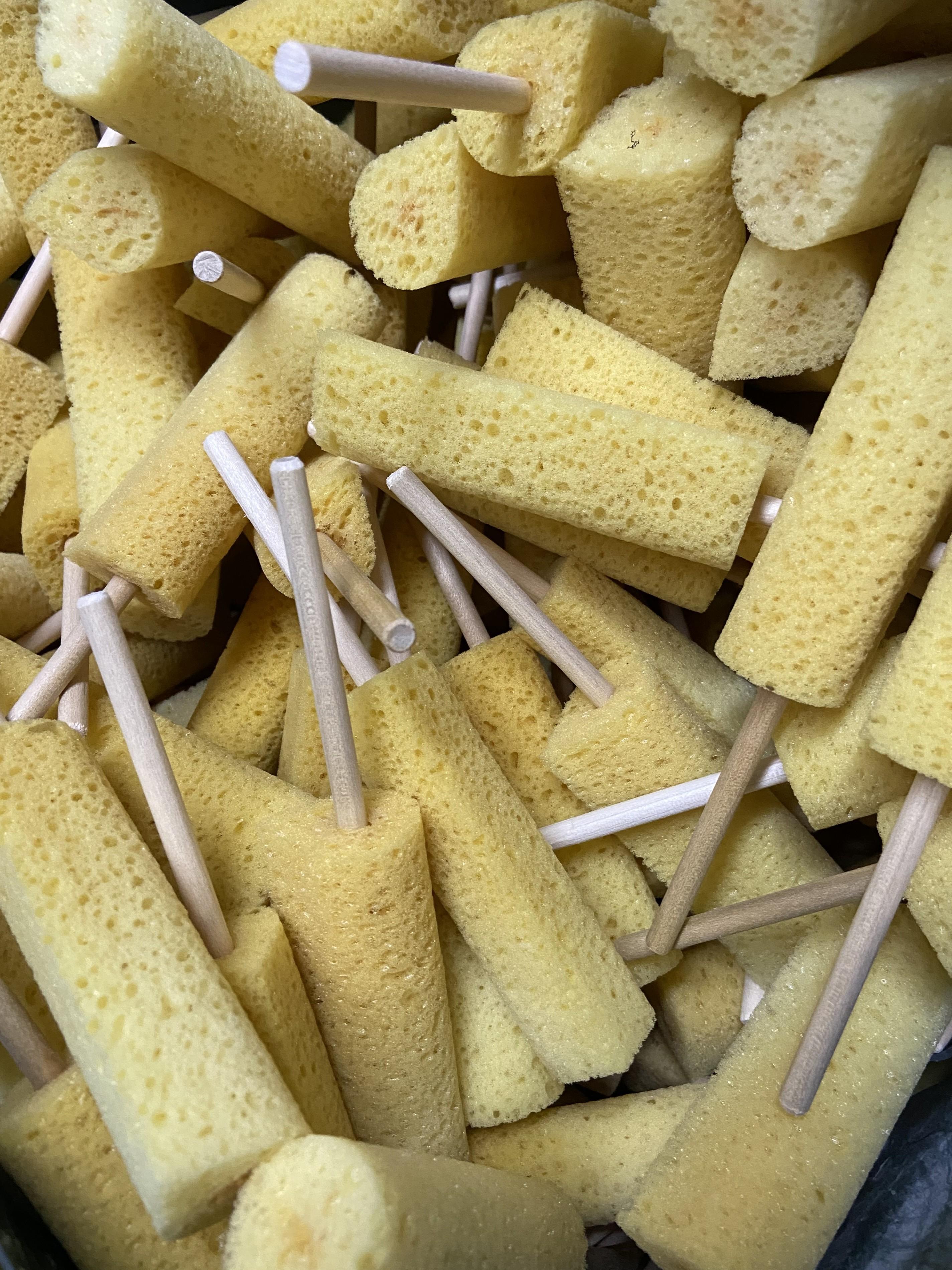
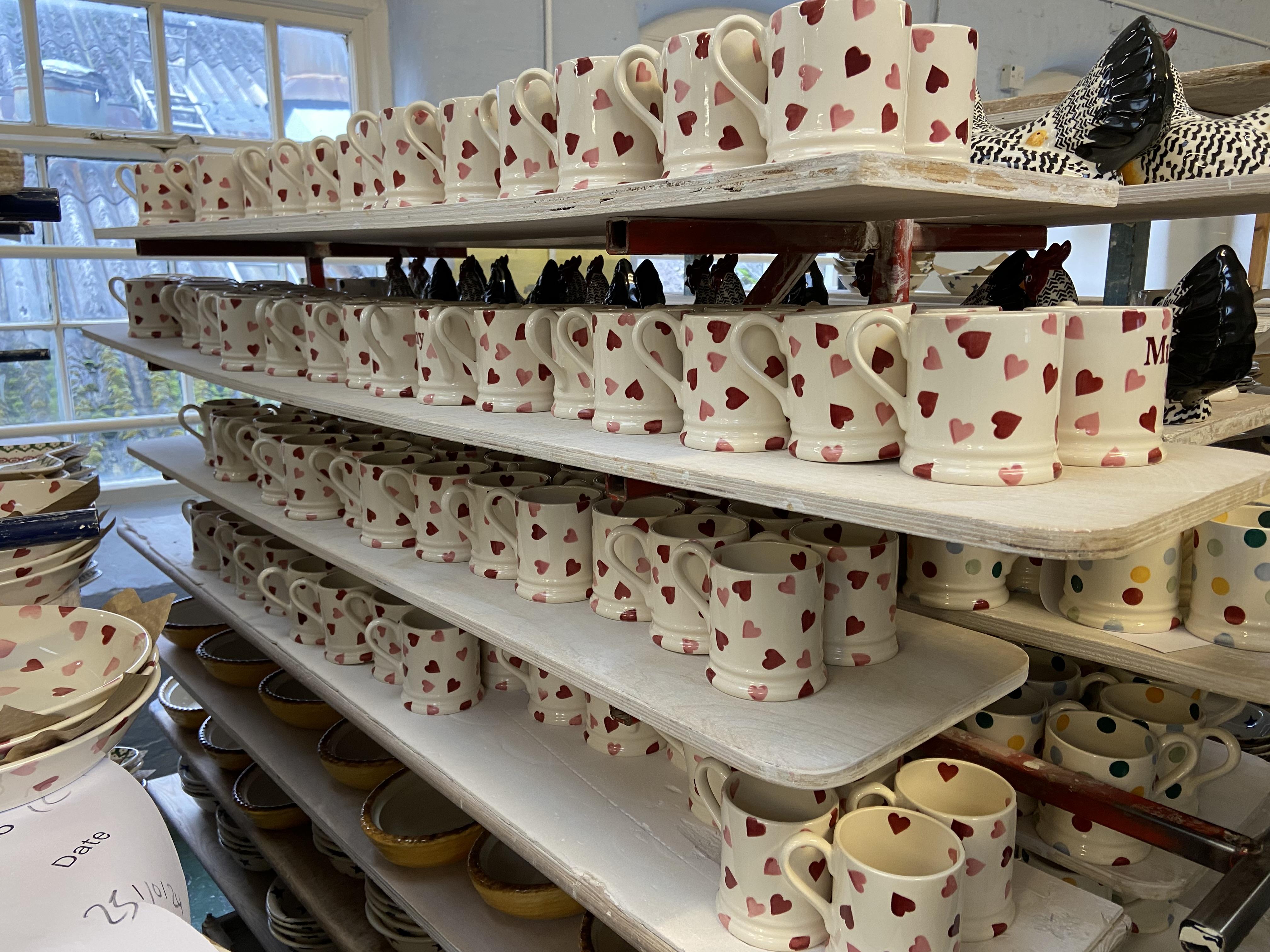
Do you have any favourite pieces?
Toast and Marmalade will always be a favourite. I also love older designs like figs and the recent vegetable patterns. I encourage our designers to revisit the archives and reimagine beloved past designs, keeping them relevant while honouring our history.
How does it feel to know your pieces are integral to so many kitchens?
It’s incredibly lovely. Designing informal china for people’s everyday lives is intimate and meaningful. Women’s friendships play a big role—I see three generations shopping together, and it’s heartwarming. Giving someone a mug symbolises connection, like saying, “I want to sit and talk with you.” I feel privileged to be part of so many family conversations around the kitchen table.
Liberty has been a long-time stockist. How does that feel?
Liberty has been with us since the very beginning, which is deeply meaningful. It’s a shop I love personally, and the long-standing relationship feels like an important part of my London life. Liberty has always been a top target, and I cherish that partnership.

Discover more Emma Bridgewater designs, including Liberty exclusives, on the Third Floor in store.
